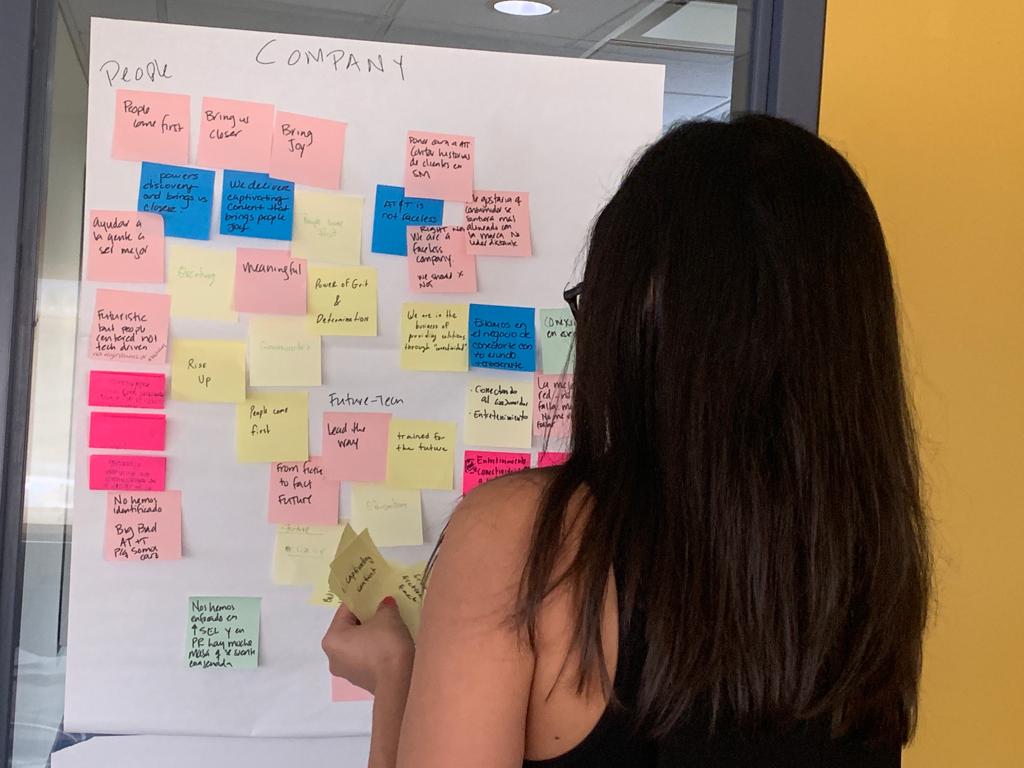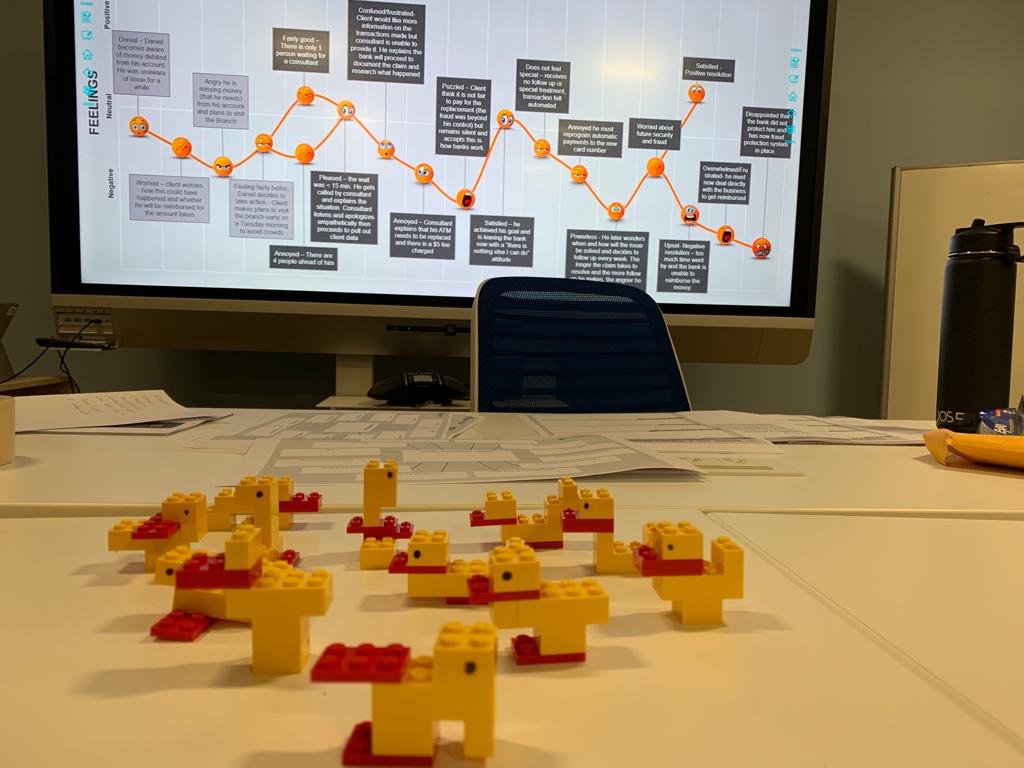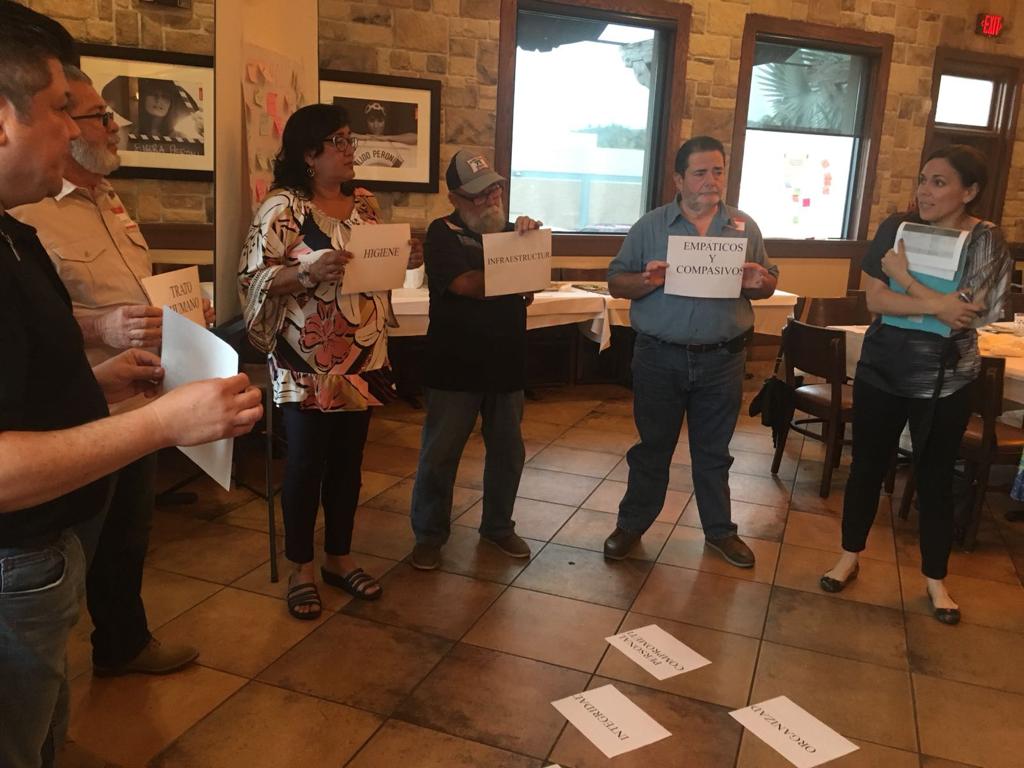
Protection Plan Sales
THE INDUSTRY:
Insurance or Consumer Goods or Corporate Products (THIS NEEDS TO BE DEFINED – IS IT A CONSUMER OR CORPORATE GOODS COMPANY THAT SIMULTANEOULSY OFFERS PRODUCT PROTECTION PLANS, OR AN INSURANCE COMPANY THAT TEAMS UP WITH OTHER COMPANIES TO PROVIDE INSURANCE COVERAGE FOR THE PRODUCT? IT’S SUPER UNCLEAR.
THE CHALLENGE:
Our client, an insurance firm offering protection plans for consumer goods or company selling consumer goods along with protection plans, experienced a steady decline in sales. Attempts to reverse that trend, like investing a considerable amount in communication efforts and lowering the plans price point had failed to move the needle.
THE TASK:
Find out what the consumers perception of the plan was, expose what were the deal breakers and discover what would motivate them to sign up.
THE JOURNEY:
Initial Assessment • Insight Hunting • Reassessment • Innovation
THE STRATEGY:
We set out on a mission to find answers as to why the protection plan just wasn’t selling by fully assessing consumer’s perception and level of interest in the plan.
THE APPROACH:
For our insight discovery phase, we targeted consumers that had purchased the product but not the protection plan. After interviewing them, we found that as they purchased the product they were also keen on purchasing protection for their investment. That led us to question why they had not done so at the time of purchase. When asked, consumers claimed to be unaware of such offering and further more, claimed that had they known about it, they would have signed up. The reason? Paying for repairs out of pocket usually ends up costing way more than insuring the product. To them it seemed like the smart choice.
With such an unexpected outcome of our interview process, we had to take a step back to reassess what part of the consumer journey was the real problem. Taking a different course of action, we looked inwards and found the answer within the records of the sales department.
THE RESULTS:
The consumer database showed that new hires were hitting the mark on their protection plan sales, while those working there for two years or more were hardly selling the product. By digging deeper we were able to find that long time employees had discovered a loophole in the plan that went against the best interest of their clients, and they did not feel comfortable selling it to them. They were honest about this and admitted prioritizing the development of a long term, trustworthy relationship with their clients, over the sales incentive offered by the company.
THE OUTCOME:
A new protection plan was co-created using the valuable feedback we gathered from the sales force. The loophole was closed, and the team felt once again confident in offering it to they loyal clientele. Sales quickly went up 18%, and not surprisingly, remained intact a year later after a price increase on the new plan.

Launch of Healthcare Innovation
THE INDUSTRY:
Pharmaceutical
THE CHALLENGE:
To successfully launch a new treatment protocol without cannibalizing the company’s current best selling treatment for the same health condition.
THE TASK:
Develop a consumer profile for each treatment and a differentiated communication strategic plan for both.
THE JOURNEY:
Deep dive • Research • Mapping • Differentiation • Strategic Innovation • Launch
THE STRATEGY:
After a deep dive to understand the differences and subtleties of each treatment option, we conducted a thorough research using a consumer centric approach by asking patients, doctors, caregivers and other stakeholders to share some insights on each of their experiences, including their particular pain points, with regards to the condition and its treatment. Then we translated the most relevant insights into different patient journey maps; each map highlighted moments in each patient’s journey that posed fundamental questions for everyone in the process.
THE APPROACH:
We designed a “strategy game” where team members had to make high stake decisions with regards to the wellbeing of others while having limited information to go on. The game became:
• A forum for decision makers to discuss strategic choices within a variety of high/low risk scenarios
• The way to clarify group mindset about treatment options
• A means to establish priorities after understanding the complexities all parties face when treating the condition.
It also helped the team understand how different stakeholders assess risk according to how their personal biases shape their reality; for example a: doctor’s thought process for prescribing a treatment to a patient.
THE RESULTS:
By recognizing the limitations of a “one size fits all” approach to patient segmentation, the client was able to determine that the communication strategy for this new treatment had to be aligned with both the patient’s and caregiver’s needs instead of previous determining criteria, like demographic profiles, previous treatment response, doctor’s point of view, etc., thus creating a communication strategy the clearly differentiated the new treatment from the existing one.
THE OUTCOME:
A patient assessment questionnaire was designed as tool to facilitate the “difficult conversations” between doctors and caregivers that were previously being ignored. Armed with a better understanding of the patient’s and caregiver’s needs and desires, doctors were able to prescribe the treatment option that best aligned with them.
By eliminating speculation and opening new and more honest channels of communication, we were able to create space so that both treatments could succeed in the market.

Employee Incentive Program
THE INDUSTRY:
Human Resources
THE CHALLENGE:
To redesign a corporate incentives program to achieve higher participation and drive healthy team competition.
THE TASK:
To untangle a complex set of reward metrics to drive employee engagement, provide better odds of success and increase overall satisfaction in the workplace.
THE JOURNEY:
Deep dive • Insight Hunting • Reinvention • Testing • Implementation
THE STRATEGY:
The client had an employee referral program for cross selling company products/services, but it lacked clarity and consistency in how points were accumulated and rewards redeemed. This resulted in alienating employees, dividing them into three very different groups:
• High achievers
• Occasional participants
• Disengaged team members
We set out to find the drivers and motivators for each profile, while hunting for insights on how they perceived the program.
THE APPROACH:
We conducted small-scale focus groups that revealed how disproportionally each group perceived the value of their effort vs the reward. Even more interesting were the findings on how members viewed their performance and how it should be rewarded, which was significantly different from the way the company leads did. To sum it up:
• Occasional participants believed they were high achievers
• Disengaged team members felt “entitled” to more incentives
• High achievers decided to focus exclusively on what they knew yielded high rewards, thus missing out on many other opportunities
THE RESULTS:
We informed the administrative team that the lack of understanding on how the incentives worked was killing the program’s chance of success. We started to simplify the incentives program by shifting the focus of employee communications from complicated reward metrics to giving participants a clear understanding of their potential increase in income if fully engaged in the program.
As a second step, Program Reports were created so that everybody have visibility of other team member’s performance and use it as an incentive for growth. The report also presented actionable items that employees could implement to increase their earnings, while tracking their success over time.
THE OUTCOME:
The incentive program shifted dramatically from complicated to simple. It is now focused on collective growth, by providing positive feedback to team members, served with a small dose of healthy competition. Participants that were underperforming became motivated once they saw their own potential. Meanwhile, high achievers organically took on the role of trainers, and ended up getting larger rewards through a customized development program. It became a win-win situation for all involved.

Social Innovation
THE INDUSTRY:
Government Agency
THE CHALLENGE:
To truly unearth the impact and the level of support and/or opposition the designation of the first ever National Marine Sanctuary (NMS) in the United States would get from the communities affected by the project.
THE TASK:
Device a strategy to boldly do what no other environmental protection agency had been able to: get the parties involved talking about the issues that trigger their feelings of acceptance or rejection towards the project, and most importantly, discovering the underlying meaning of what the area to be protected represents for each of them.
THE JOURNEY:
Strategic Thinking • Insight Hunting • Collaborative Work • Final Assessment
THE STRATEGY:
We created a safe environment to bring together the opinion leaders from the fishing community and the tourism businesses in the area that had the most clashing views or strongest opinions with regards to environmental protection. We wanted them to have a civilized sit down, while we worked through the trust issues created by the lack of transparency and the misinformation amongst the parties involved, in order to get them talking.
THE APPROACH:
After a lot of out of the box thinking we decided to use a highly collaborative approach. We brought in a Public Relations expert as a neutral entity to “witness” the process for the sake of transparency.
She was also there to contain the spread of false or misleading information by stating facts, and to keep exchanges respectful while we moderated the sessions.
We kicked the initiative off with 32 mini focus groups, segmented by target group to ease tensions and build trust. Lots of powerful insights were gathered from each session.
Then we devised 4 collaborative work sessions where we brought folks from all target audiences and facilitated different dynamics so they could discuss, seek to align and agree on how to approach the communication of the potential designated area.
THE RESULTS:
Results were translated into various communication concepts that tackled each groups concerns while posing a fundamental belief most of them agreed on: that protecting the environment is our responsibility.
THE OUTCOME:
Our client realized that in order to have this project be a success he needed to have more fishermen on board, so it was postponed. Our insights on how perceptions could be positively altered and on what each community needed to support the designation of the marine sanctuary led to transformative and meaningful communication and the emergence of a partnership with community leaders to plan a better defined solution.
